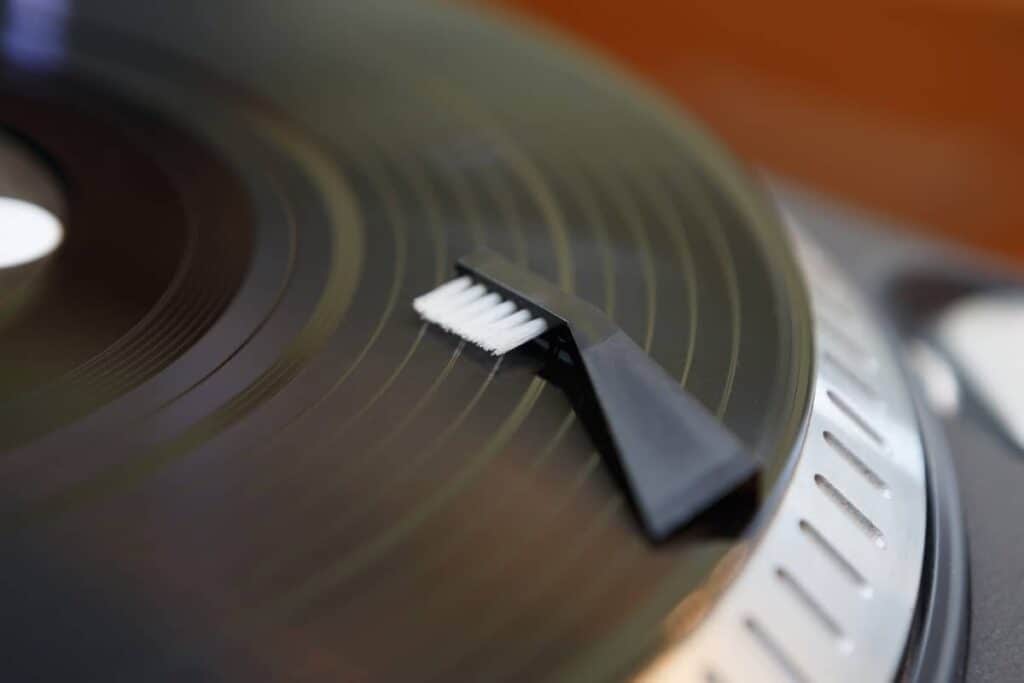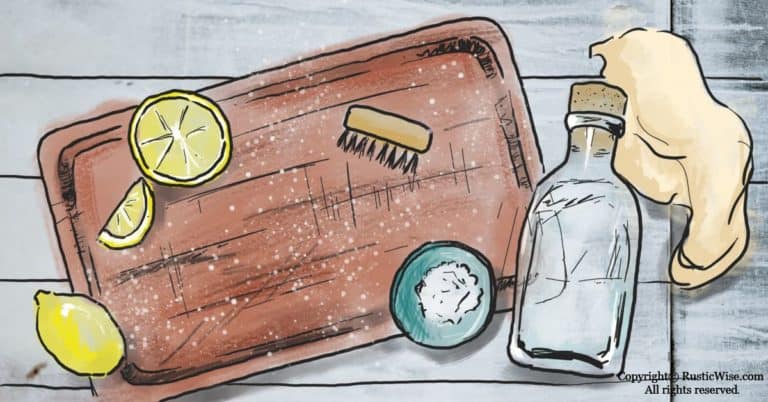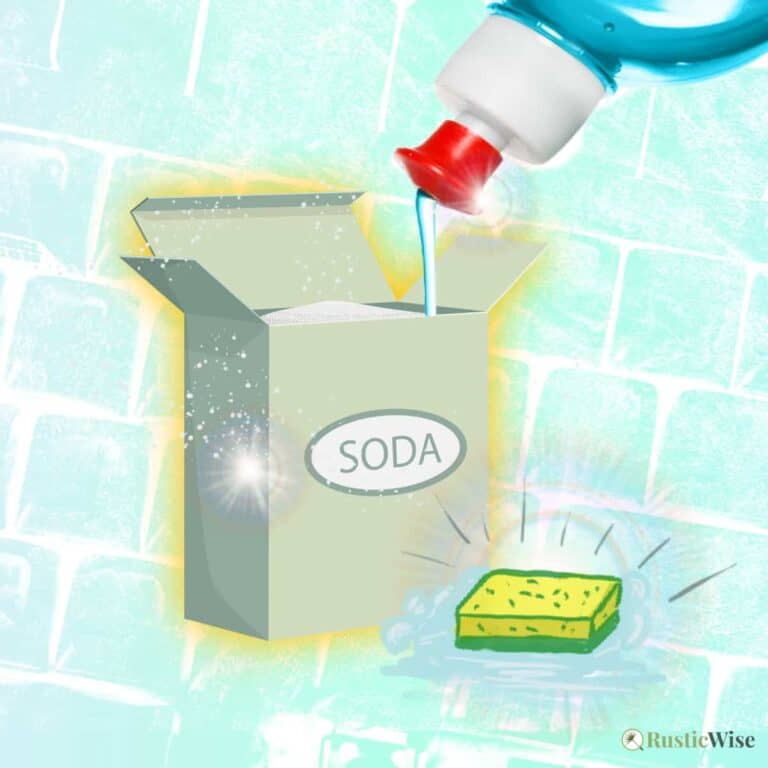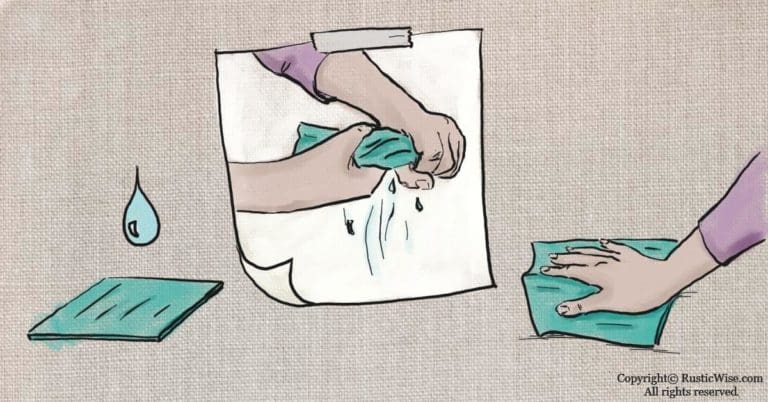How To Clean 78 Records Without Damaging the Shellac
Some of you may be lucky enough to have a few 78 rpm records. Chances are, these old recordings are covered in dust or a layer of grime and could use a good cleaning. Before you dive right in, you should know that the shellac finish on 78s is quite fragile and can damage easily by improper handling.
If you’re wondering how to clean 78 records without ruining them, I’ll show you how to get them squeaky clean. You’ll need a mild liquid soap such as dish soap for handwashing dishes, and a soft brush such as a paintbrush. Rinse the record with warm water, apply a diluted soapy solution using a brush in a clockwise motion. Finally, rinse clean, and let it dry on a dish rack, or wipe clean with a soft cloth.
With proper care, you can enjoy your piece of auditory history and keep your record collection in mint condition. Let’s take a closer look at how to gently clean your 78s in 5 easy steps, plus how to care for them.
What exactly are 78 records?
78 records are a type of phonograph disc that was made sometime between 1898 and the late 1950s. They have a playing speed of 78 revolutions per minute (rpm), hence their name. The most common sizes of 78 records are 10-inch (25 centimeter) and 12-inch (30 25 centimeter).¹
These records have either one or two sides, with each side having a maximum playtime of around five minutes for 12-inch records, and three minutes for 10-inch recordings.¹
Most 78s came in paper or cardstock sleeves with a circular cutout in the middle to display the record label.
What materials are 78s made of?
The most common material used for 78s is a shellac resin, a particularly brittle material.
Here’s an interesting fact: shellac comes from the secretions of the lac insect (Laccifer lacca). It’s a type of natural thermoplastic that when combined with alcohol, is useful for many commercial applications such as sealants, waxes, glazes, and sprays.²
There are a limited number of 78 discs made of vinyl during World War II (as shellac was in short supply). But by and large, most 78s are made of shellac.
Eventually vinyl records became more common in the 1950s.¹

Record cleaning tips: do’s and don’ts
These records are more fragile than vinyl because they’re made of shellac and if you don’t handle them properly, they can crack. With age, they’re prone to warping.
While shellac is a fragile material, cleaning 78s isn’t actually too difficult. Here are a few things to keep in mind to clean your records safely.
Do’s
- Tread gently: When cleaning your 78 records, it’s important to avoid pressing too hard, which can cause it to crack.
- Use distilled water to rinse: When doing the final rinse, it’s important to use distilled water. Tap water (especially if you have hard water), can leave behind mineral deposits such as calcium or magnesium, which could damage the finish, or interfere with the record player.
- Keep it soft and mild: Only use non-abrasive cleaning supplies and soaps such as a non-scratch stiff brush, microfiber cloth, and mild soap such as dish detergent.
Don’ts
- Use hot water: When rinsing the record, avoid using very hot water which could warp the disc. On the flip side, cold water doesn’t do a good job cleaning. Instead, stick with lukewarm water.
- Use alcohol or harsh cleaners: Avoid using sprays which contain alcohol, or other cleaners which contain acetone, acetic acid (vinegar), or other strong chemicals such as bleach which could strip, etch, or dissolve the finish.
- Use paper towels: Paper towels are more abrasive than you think and could easily leave behind scratches. The fibers of the paper can also get stuck in the grooves.³
How to clean 78 records in 5 easy steps
While you could invest in a record cleaning machine, there’s an easier (and less expensive) way to clean 78 rpm records using mild soap and a soft brush.
Let’s gather a few supplies:
- Mild detergent: Liquid dish soap (such as Dawn or Palmolive that you use for dishwashing). Don’t use dishwasher detergent that contains stronger chemicals which could damage old records.
- Soft brush: This could be a paintbrush, a clean makeup brush, or even an old toothbrush.
- Distilled water: As an extra precaution, use distilled water when rinsing your 78s. This prevents hard water minerals from damaging your collection.
- Microfiber cloth: Any soft and lint-free cleaning cloth works like a charm to dry the record.
- Dish rack: A regular dish rack allows the discs to fully air dry.
- Small bowl or bucket: For making a gentle cleaning solution.
Tip: Some paintbrushes or cosmetic brushes are too soft for cleaning in between the grooves (especially if there is a lot of grime buildup). You can grab a pair of sharp scissors to give it a short trim to make the bristles more stiff and better for cleaning.⁴
Here’s how to properly clean 78s without damaging the shellac.
- Pre-rinse: Start cleaning a 78 by giving it a quick rinse under a gentle stream of lukewarm water.
- Prepare the cleaning solution: Add a small drop or two of liquid mild soap to a bucket. A little goes a long way—don’t go overboard with the soap. Fill with warm water to create a sudsy solution.
- Dip the brush and clean clockwise: Dip your cleaning brush into the soapy water and wring out any excess water. Your brush should be damp, but not soaking wet. Gently scrub the record by applying soft pressure in a clockwise motion (this is the same direction of the grooves, and the path the stylus moves in). Go over each side of the record several times as needed.
- Rinse: Rinse the record under with distilled water to remove any soapy residue.
- Dry: Use a soft microfiber cloth to wipe off excess water. Next, let it air dry on a dish rack. This allows the records and label to dry fully.
Tip: Now that your record is sparkling clean, don’t store it in the same old, dusty sleeve. Consider storing it in a new, clean one.

Taking care of 78 records
Now that you know how to use plain soap and water to clean records without damaging the surface, here’s how to keep your collection in tip-top shape.
It’s important to properly store your 78 records:
- Keep them away from extreme temperatures and direct light.
- Avoid storing in areas with high humidity.
- Store 78s upright on stable shelving
- Dust regularly.
Related questions
Are vinyl records the same as 78s?
No, vinyl records are newer and less fragile than 78s, which are made from shellac. The grooves on 78s made before the 1950s are also wider apart and deeper than modern vinyl records. This means that you’ll need a special stylus needle to play 78s. Playing a 78 with a stylus made for vinyl will cause overall poor sound quality and damage to the stylus.³
How to tell the difference between vinyl records and shellac records?
It can be difficult to differentiate between vinyl and shellac discs. In general, shellac records are heavier, more dense, and often thicker than modern vinyl. If you give it a gentle knock, the shellac will have resonation.
Whatever you do, don’t drop shellac records—they might shatter!
👉 If you like this post, see other Timeless Cleaning Tips You Need To Know. 🌟
Would you like more timeless tips via email?
Fun tips to help you live an independent, self-sustaining lifestyle. Opt-out at any time.


References
- Yale University Library, The history of 78 RPM recordings, https://web.library.yale.edu/cataloging/music/historyof78rpms. Accessed March 2023.
- Britannica, Shellac resin, https://www.britannica.com/topic/shellac. Accessed March 2023.
- Audacity, Recording 78 rpm records, https://manual.audacityteam.org/man/recording_78_rpm_records.html. Accessed March 2023.
- Shure Service & Repair, Cleaning Records by Washing, https://service.shure.com/s/article/cleaning-records-by-washing?language=en_US. Accessed March 2023.

Author: Josh Tesolin
Josh is co-founder of RusticWise. When he’s not tinkering in the garden, or fixing something around the house, you can find him working on a vast array of random side projects.









